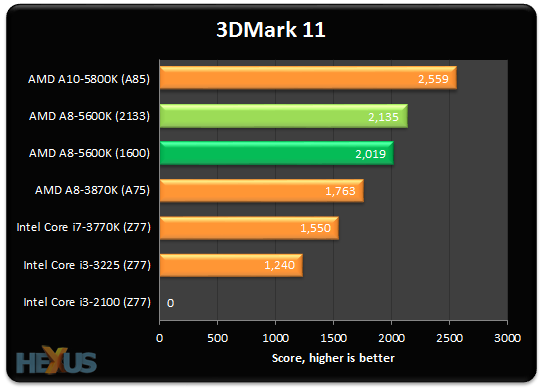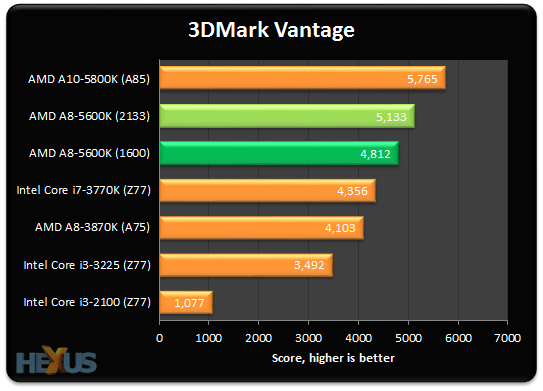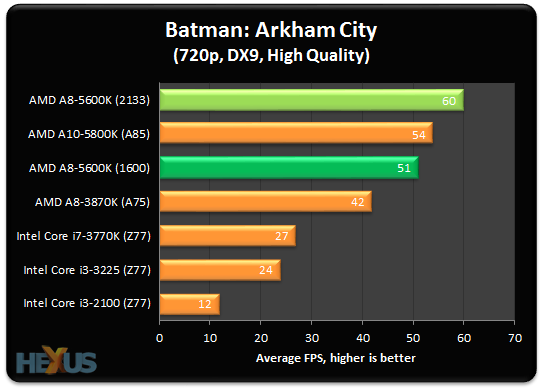Memory-scaling performance
Providing more information for this review, recall how the graphics performance of the A10-5800K improved as we switched to faster system memory. The integrated graphics take their bandwidth quota from the system, so faster system RAM produces better gaming performance.
Our default-clocked testing takes place with memory running at 1,600MHz, in dual-channel mode, and with 9-9-9-24-1T timings. We simply changed the memory's frequency to 2,133MHz and inputted 11-12-12-30-2T timings, to see if the extra bandwidth made a tangible difference to the scores. Here are our five gaming benchmarks shown again, though this time with different-speed memory for the A8-5600K.

DDR3-2,133 is almost six per cent faster in 3DMark 11.

And almost seven per cent in 3DMark Vantage.

This benchmark, folks, is the poster-child for faster RAM on a desktop Trinity platform. Believe it or not, there's a 17.5 per cent performance improvement through a switch in memory alone, which is more than enough to sail past the default score of the A10-5800K.

The DX11 path places greater reliance on the GPU cores than memory bandwidth.

But you wouldn't say no to a 10 per cent-plus hike through the use of faster memory, would you?
Considering an AMD Trinity-based APU? Buy some value-orientated DDR3-2,133 RAM.









